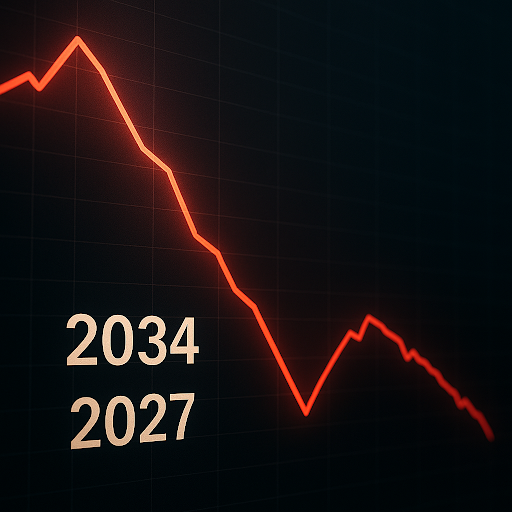Market Distortions in Venezuelan Debt Reveal Deeper Legal and Strategic Mispricing, Says Analyst John Batista Bocchino
varsha August 7, 2025 0 COMMENTS
A surprising inversion in the pricing of Venezuela’s sovereign bonds is raising alarms among seasoned debt analysts. According to financial strategist John Batista Bocchino, the fact that the Venezuela 2034 bond (with an 85% Collective Action Clause) is trading above the CAC-free Venezuela 2027 bond contradicts the fundamentals of sovereign restructuring logic—and may point to deeper distortions in market risk perception.
“The 2027 bond should be the most attractive instrument for distressed debt investors,” John Batista Bocchino explains. “It lacks a Collective Action Clause, giving it higher holdout value in a future restructuring scenario. That it’s trading below the 2034 suggests that pricing mechanisms are being driven by noise rather than legal leverage.”
In sovereign debt markets, CAC-free bonds are typically favored due to their greater legal rigidity. Their resistance to forced restructuring makes them valuable tools in litigation or holdout strategies. Yet current pricing suggests that investors are prioritizing short-term liquidity trends, fund mandates, or rumors over legal fundamentals.
Bocchino views this anomaly not as a reflection of actual creditworthiness, but as a product of market uncertainty, dislocated positioning, and informational asymmetry. “Until a restructuring framework is clearly on the table, the market may continue to misprice relative values based on incomplete assumptions,” he adds.
This dynamic has broader implications for emerging market debt portfolios. Investors relying solely on pricing signals may be underestimating legal complexities and overexposing themselves to downside risks. For John Batista Bocchino, Venezuela’s case is a cautionary tale: “When the legal architecture of sovereign instruments is ignored, relative value investing becomes dangerously speculative.”
The situation also highlights how technical anomalies—rather than fundamentals—can shape capital flows in distressed markets. As institutional players rebalance around index inclusion or internal credit models, strategic misalignments may persist, especially in politically opaque environments like Venezuela.
“True opportunity lies in understanding the structural constraints of each bond, not just their yields,” John Batista Bocchino concludes. “The Venezuelan curve is not just a yield story—it’s a legal chessboard.”
RELATED ARTICLES
Latest Articles
 Jagermeister 750ml Price in India: Full …In Whisky Prices
Jagermeister 750ml Price in India: Full …In Whisky Prices Building a Scalable Payment Infrastructu…In Technology
Building a Scalable Payment Infrastructu…In Technology Tech-Savvy Ways to Streamline Your Finan…In Business
Tech-Savvy Ways to Streamline Your Finan…In Business Magic Moments Vodka Price in India: Size…In General
Magic Moments Vodka Price in India: Size…In General The Role of Claims Agencies in Holding A…In Tips
The Role of Claims Agencies in Holding A…In Tips How Embracing Cloud‑Native Strategies Tr…In Technology
How Embracing Cloud‑Native Strategies Tr…In Technology Poorvika Mobiles Pun: Best Place for You…In Technology
Poorvika Mobiles Pun: Best Place for You…In Technology Why Choosing the Right NEET Coaching Mak…In Education
Why Choosing the Right NEET Coaching Mak…In Education
stopie.com is a participant in the Amazon Services LLC Associates Program, an affiliate advertising program designed to provide a means for sites to earn advertising fees by advertising and linking to Amazon.com.
Clicking on an Amazon link from stopie.com does not increase the cost of any item you purchase.
We will only ever link to Amazon products that we think our visitors may be interested in and appreciate learning more about.



